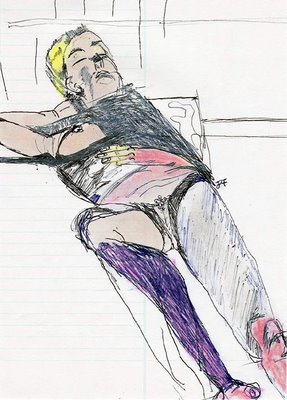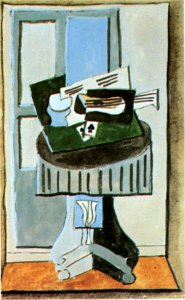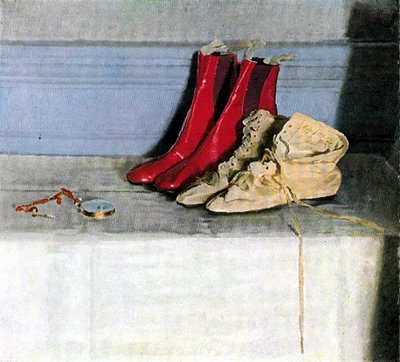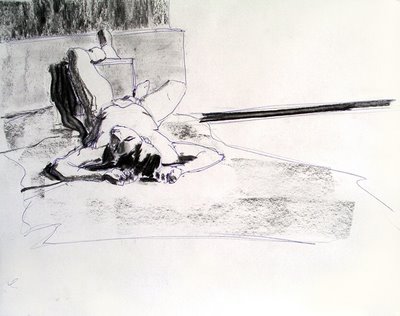
Untitled
ink and pastel
8.5" x 6.1" (21.6 cm x 15.5 cm)
Johanna Toth. June 19, 2006.
After recently looking at some restrained work by William Nicholson a drawing by Winnipeg artist and illustrator, Johanna Toth, might be in order.
A friend, when he saw this drawing, asked, " What's happening with that blue leg?" What indeed?
The model for this drawing is the same model who appears in several other posts:
Woman with Glasses, May 15
Standing Figure, May 12
Body with Tattoos, May 9
Dragon, March 11




















